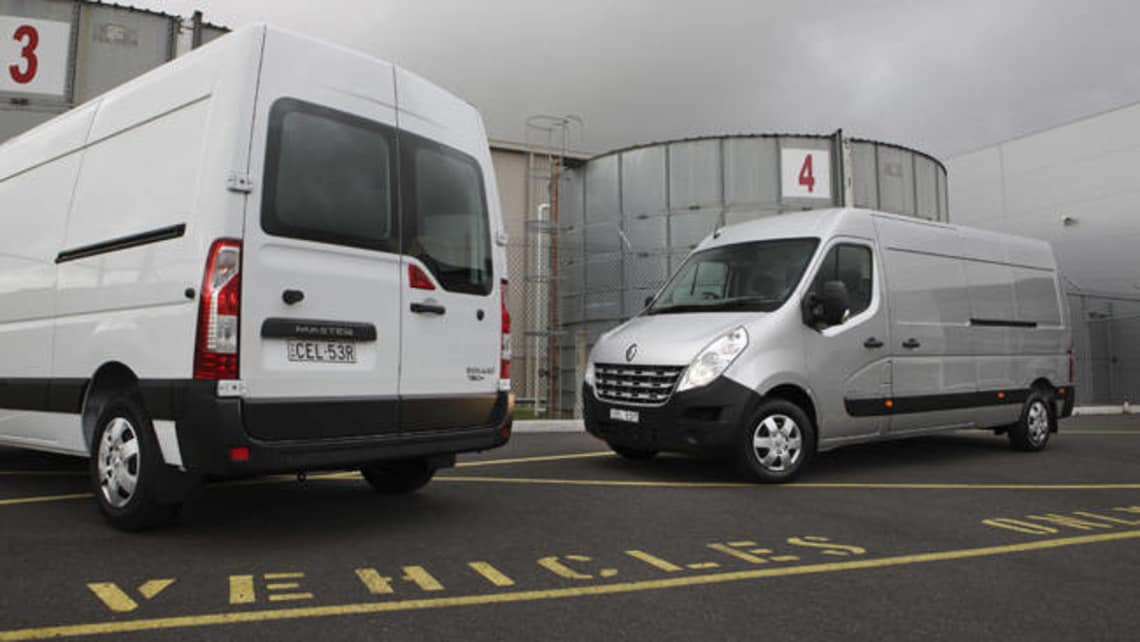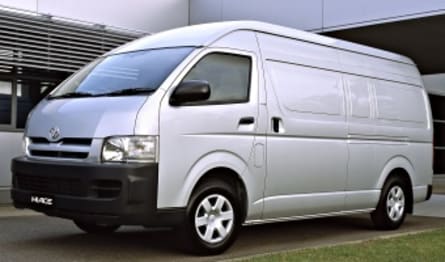
Large Commercial Van 2012 Review
- Toyota HiAce
- Hyundai iLoad
- Renault Master
- Toyota HiAce 2012
- Hyundai iLOAD 2012
- Renault Master 2012
- Toyota HiAce Reviews
- Hyundai iLoad Reviews
- Renault Master Reviews
- Hyundai Reviews
- Renault Reviews
- Toyota Reviews
- Hyundai Commercial Range
- Renault Commercial Range
- Toyota Commercial Range
- Commercial
- Hyundai
- Renault
- Toyota

More than a quarter of a million Toyota HiAce vans have been sold in Australia - but history is no pointer to the future of buyer trends. European manufacturers are taking a swipe at Toyota's lead, at the same time that the giant Japanese maker is seeing HiAce sales being lost to Hyundai's iLoad van model.
This year to May, Hyundai sold 243 iLoads against 186 HiAces. But while the Korean now dominates commercial vans, the HiAce bus sold 264 units to give it dominance in the sub-20 seat bus sector.
The Europeans are also in the race and though now small in number, there's a wave coming. This year in WA, Fiat sold 10 Scudo vans, Mercedes sold 24 Vitos, Ford found 66 Transit owners, Mitsubishi's Express went to 46 buyers while under the radar, Peugeot won two sales with its Expert, Volkswagen sold 17 Transporters and Renault's Trafic had five sales.
Renault Trafic's big brother, the Master, is one of the latest to be upgraded as it takes on the Australian market. Renault has the biggest share of Europe's huge van segment but is almost unknown here. That may change.
The Master is designed for big loads to be hauled over long distances - perfect, it seems, for Australia. It comes with payloads of up to 1650kg and in its long wheelbase format (there's also mid and short wheelbases) can fit up to three standard Australian pallets.
The cargo area is 12.5cu.m - and even in the mi-wheelbase model, it's a cavernous 10.3cu.m - while the rear barn doors open to 270-degrees for easy loading with a forklift.
The Master comes with one sliding door (on the left side), which is 1200mm wide, while a second sliding door is available as an option. For the Australian market, Renault boosted safety by fitting a steel bulkhead and a cargo barrier as standard equipment. This adds to the electronic stability control, traction control, ABS brakes and airbags for the driver and passenger.
Pricing starts at $43,990 for the manual mid-wheelbase model and runs through to the long wheelbase with automated transmission for $47,490. The new Master is powered by a 107kW/350Nm 2.3-litre four-cylinder turbo-diesel that drives the front wheels through either a six-speed manual or $2300 optional six-speed automated (clutchless) transmission.
Fuel consumption is claimed at 9.0 L/100km for the manual and 8.5L/100km for the automated version. More pertinent is the Master's range of more than 1230km with the semi-auto version. The fuel tank holds 105 litres. For fleet buyers, the new Master has low running costs and a three year or 200,000km warranty.
Safety also features high for the Toyota HiAce but it can't match the Renault's standard equipment. All HiAce models have two airbags, ABS brakes and brake assist as standard.
There are 12 models in the HiAce range, comprising three body styles, two wheelbases, two engines and two transmissions. The bodies are long wheelbase (2570mm), wide-body and high roof "Super-Long'' wheelbase (SLWB) van and the commuter bus (both 3110mm).
Drivetrains are a 2.7-litre four-cylinder petrol or 2.5-litre common-rail turbo-diesel engine. The petrol engine has hardened valves and valve seats to allow for LPG operation while the SLWB diesel models get an air to air intercooler. Both engines can be mated to a five-speed overdrive manual or electronically controlled four-speed overdrive automatic transmission.
Toyota last upgraded the HiAce - which was launched in its current form in 2005 - in 2010 with a taller final drive ratio to suit an increase in output of the diesel engine to 100kW/300Nm. It claims fuel economy improvements of 7 per cent, now 8 L/100km for the LWB diesel.
The HiAce LWB has 6cu.m of cargo space and the SLWB model has 9.8cu.m of space. Cargo height is 1335mm for LWB and 1635mm for the SLWB van and widths are 1545mm and 1730mm respectively.
The Hyundai iLoad is a refined and well-built worker with two models - van and crew van - and two engines. The crew van adds an extra row of seats, making it a six-seater van that still has a huge cargo area.
All models have a four-star crash rating, dual front airbags, ABS brakes and electronic brakeforce distribution while the diesel models can be optioned with electronic stability control and traction control.
Hyundai offers two engines - a 129kW/228Nm 2.4-litre four-cylinder petrol and the more prefered 125kW/392Nm 2.5-litre turbo-diesel. The petrol comes only with a manual gearbox but the diesel has the option of a five-speed auto.
Hyundai claims the petrol gets 10.5 L/100km and the diesel returns 8.5 L/100km with the manual gearbox and 9.6 L/100km with the auto. In standard form the iLoad has handy sliding doors on each side and a lift-up tailgate but there is an option of barn doors for forklift loading.
Despite its modest exterior size, the iLoad's space is cavernous. The van will take up to 5.3cu m of cargo and a payload of 1100kg.
Pricing guides
Range and Specs
| Vehicle | Specs | Price* | |
|---|---|---|---|
| LWB | 2.7L, ULP, 4 SP AUTO | $14,190 – 18,700 | 2012 Toyota HiAce 2012 LWB Pricing and Specs |
| Slwb | 2.7L, ULP, 5 SP MAN | $14,630 – 19,250 | 2012 Toyota HiAce 2012 Slwb Pricing and Specs |
| Commuter | 3.0L, Diesel, 4 SP AUTO | $14,300 – 18,810 | 2012 Toyota HiAce 2012 Commuter Pricing and Specs |
$13,990
Lowest price, based on 32 car listings in the last 6 months








